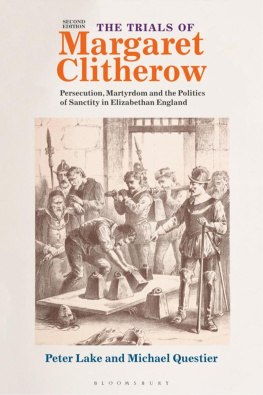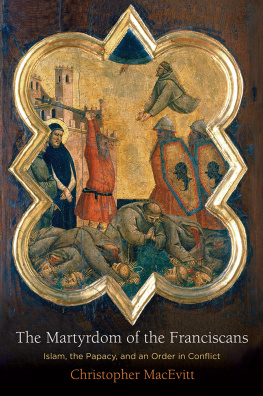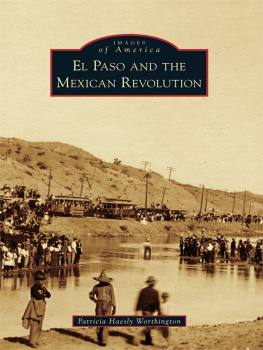Fr. Wilfrid Parsons - Mexican Martyrdom: Firsthand Accounts of the Religious Persecution in Mexico 1926-1935
Here you can read online Fr. Wilfrid Parsons - Mexican Martyrdom: Firsthand Accounts of the Religious Persecution in Mexico 1926-1935 full text of the book (entire story) in english for free. Download pdf and epub, get meaning, cover and reviews about this ebook. year: 2015, publisher: TAN Books, genre: Detective and thriller. Description of the work, (preface) as well as reviews are available. Best literature library LitArk.com created for fans of good reading and offers a wide selection of genres:
Romance novel
Science fiction
Adventure
Detective
Science
History
Home and family
Prose
Art
Politics
Computer
Non-fiction
Religion
Business
Children
Humor
Choose a favorite category and find really read worthwhile books. Enjoy immersion in the world of imagination, feel the emotions of the characters or learn something new for yourself, make an fascinating discovery.

- Book:Mexican Martyrdom: Firsthand Accounts of the Religious Persecution in Mexico 1926-1935
- Author:
- Publisher:TAN Books
- Genre:
- Year:2015
- Rating:4 / 5
- Favourites:Add to favourites
- Your mark:
- 80
- 1
- 2
- 3
- 4
- 5
Mexican Martyrdom: Firsthand Accounts of the Religious Persecution in Mexico 1926-1935: summary, description and annotation
We offer to read an annotation, description, summary or preface (depends on what the author of the book "Mexican Martyrdom: Firsthand Accounts of the Religious Persecution in Mexico 1926-1935" wrote himself). If you haven't found the necessary information about the book — write in the comments, we will try to find it.
Fr. Wilfrid Parsons: author's other books
Who wrote Mexican Martyrdom: Firsthand Accounts of the Religious Persecution in Mexico 1926-1935? Find out the surname, the name of the author of the book and a list of all author's works by series.
Mexican Martyrdom: Firsthand Accounts of the Religious Persecution in Mexico 1926-1935 — read online for free the complete book (whole text) full work
Below is the text of the book, divided by pages. System saving the place of the last page read, allows you to conveniently read the book "Mexican Martyrdom: Firsthand Accounts of the Religious Persecution in Mexico 1926-1935" online for free, without having to search again every time where you left off. Put a bookmark, and you can go to the page where you finished reading at any time.
Font size:
Interval:
Bookmark:
Mexican Martyrdom
Wilfrid Parsons, S.J.
Copyright 1936 by The Macmillan Company, New York, New York.
Library of Congress Catalog Card Number: 87-51412
Cover design by Milo Persic.
TAN Books
Charlotte, North Carolina
www.TANBooks.com
2012
PUBLISHER'S NOTE
For a proper understanding of the historical roots of Mexican Martyrdom, the reader is referred to Blood-Drenched AltarsA Catholic Commentary on the History of Mexico, by Most Reverend Francis Clement Kelley, originally published by Bruce Publishing Company, Milwaukee, Wisconsin in 1935 and reprinted by TAN Books and Publishers, Inc. in 1987. (Copies are available through local bookstores or direct from the Publisher.)
From the pages of Bishop Kelley's enlightening book comes the insight that the Great Mexican Revolution, unleashed in 1810 by the "Catholic" priest Miguel Hidalgo and culminating in the rule of Plutarco Elias Calles in 1928, never really varied in character throughout its long history and that it was always violently anti-Catholic and left-leaning.
Except for the 35-year interlude of strongman Porfirio Diaz, from 1876 to 1911, when the Catholic Church was allowed to function without restraint and foreign investment was encouraged, the Great Mexican Revolution was pronouncedly anti-Catholic and socialist, characteristics which it still retains today. No priest or nun, for example, is allowed to appear in public in religious garb even to this day, and as recently as 1982, the Mexican government, ruled by the Party of Institutionalized Revolution, nationalized all the private banks in the country.
That President Calles (1924-1928), with his particular background, should persecute the Church in an open, bloody manner was simply an extension of the overall thrust of the Revolution and was a logical consequence of the Constitution of 1917 and the terribly bloody history of the Revolution from its very inception.
Interesting to note, of course, is the fact that, in a country estimated at some 97% Catholic, an anti-Catholic government rules; also, that despite complete control of all the economic and political forces in the country, the one-party, semi-socialist government still cannot seem to provide a prosperous economy for its people.
Almost all of today's reference books and most history books about Mexico paint the Spanish colonial period, 1521 to 1821, as an age of ignorance, repression, poverty, slavery and general deterioration of culture, but the era of the Revolution, 1810 to the present, as one of progress, enlightenment, freedom and prosperity. Blood-Drenched Altars proves just the opposite to be true, and Mexican Martyrdom is a strong exclamation mark in support of that thesis. Let the reader peruse these two books and decide for himself on which side lies the truth.
Thomas A. Nelson
Publisher
FOREWORD
THIS BOOK is an attempt to illustrate by a recital of facts the nature of a struggle that has gone on in a neighboring country for the past ten years. It is not a controversial work, still less is it a work of scholarship on the Mexican situation. It is not an historical account of all Mexican events. It is designed to give the reader as vivid a picture as possible of how the Mexican people have lived during that time, particularly if they took sides with the Church in the struggle. It is frankly written with sympathy for these Mexicans, though a sincere effort has been made to understand and to present the point of view of those who are opposed to them.
A word should be said about the sources of the many narratives of incidents throughout the book. Since the book is not a scientific work of history, references have not generally been given, except with regard to quotations from books, and these quotations are nearly always restricted to writers who have generally been known as favorable to the Mexican Government. Many of the incidents related, as will be noticed, are personal experiences of the author, or were narrated to him at first hand by personages who have been involved in them. He stands sponsor for them. For the whole latter part of the book, after privileged to inspect the private archives of the Apostolic Delegate for Mexico, now in San Antonio, Texas. These archives consist of exhaustive reports made to the Papal representative by the Bishops or administrators of each of the Mexican dioceses, first, according to a general questionnaire they were required to answer, and secondly, according to monthly reports made since that. These archives are unpublished material, and are utilized by special permission. They are mentioned here once for all as authority for these chapters. The rest of what is narrated is of public knowledge.
CONTENTS
CHAPTER I
DILEMMA
THE TOWN OF IRAPUATO in the State of Guanajuato is a railroad junction where you either go straight on to Mexico City from Guadalajara in the West or change trains for the long ride north to Juarez and El Paso.
It is a lazy, dusty town, with only one hotel that I could see, and that not more inviting than any similar one in a similar town in the United States. Luncheon was a dreary, greasy plate of fried eggs, tasting of preservative, and lukewarm coffee that had stood since breakfast. It was soon finished, and there was nothing else to do but wander out to see what Irapuato had to show. It had very littlea sort of hopeless, routine kind of place, dirty, gray, and listless.
Yet in that town of Irapuato I had an experience that seemed to uncover for me the very mystery and soul of Mexico.
I was kneeling alone in the back of one of Irapuato's parish churches. The irregular stone floor was hard and uncomfortable; the gray of the walls was streaked with weather marks; faded banners of red and yellow straggled from the ceiling. A woman or two knelt here and there. While I knelt, feeling uneasy and vague, a side door opened, and a little Indian, about forty years old maybe, came in. He wore only his cotton trousers and jacket, his dusty bare feet grew into his leather sandals, the inevitable flaming serape was around his neck, his broad-brimmed hat in his hand.
He moved slowly to the middle of the church, knelt down, laid his hat carefully beside him, and suddenly leaned forward and kissed the floor. Then, upright and still kneeling, he stretched out his arms in the form of a cross. He knelt that way a long time, motionless.
Something made me want to see his face. I wandered up to the front of the church, to see the picture over the altar, and when I turned he was still there. I went back, and as I passed him looked into his face.
I will never forget his eyes. They were looking straight ahead; they did not see me at all. They were deep brown, almost black. They were not pleading, they did not flutter, but they were aflame. For just those few seconds I looked into a very ecstasy of devotion. When I left the church, he was still there where he knelt.
For hours I was under the spell of that little Indian. Years of reading, of study, of acquaintance with Mexicans, had always left me with the unsolved puzzle: can the Church be defeated in Mexico as it was defeated in England, in Sweden, in Prussia; as it was not defeated in Ireland, or in Poland? Can the Faith be wrenched out of a people's soul? It has been, in the past, more than once. Can it happen here, in Mexico? All the rest seemed to me to be futile wrangling. The heart of the debate is there, in the soul of Mexicans, not in newspapers, or legislative halls, or in dark and musty dungeons.
This, then, is what Mexico means. Will what I saw in the eyes of my Irapuato Indian ever die out and become only a meaningless stare? It seemed to me that it was worth examining; and it still seems to me to be a passionate inquiry.
Mexico, more than Russia, more than Spain, is a proving ground for human destiny. One hundred and fifty years ago, it was the very show place of Spanish civilization; it was New Spain. Beside its splendors of architecture, painting, sculpture, libraries, and lecture halls, the puny efforts of a century and a half in our own Colonies were like little backwoods villages of clapboard and shingles. When Spain left Mexico, it left behind a culture and what we mean by civilization that was as great as any country will ever have to show; the solid monuments are still there to show it, in thousands of churches, schools, halls, public buildings, and private homes. We still have a long way to go before we will have created all the beauty that was, and is, Mexico's.
Next pageFont size:
Interval:
Bookmark:
Similar books «Mexican Martyrdom: Firsthand Accounts of the Religious Persecution in Mexico 1926-1935»
Look at similar books to Mexican Martyrdom: Firsthand Accounts of the Religious Persecution in Mexico 1926-1935. We have selected literature similar in name and meaning in the hope of providing readers with more options to find new, interesting, not yet read works.
Discussion, reviews of the book Mexican Martyrdom: Firsthand Accounts of the Religious Persecution in Mexico 1926-1935 and just readers' own opinions. Leave your comments, write what you think about the work, its meaning or the main characters. Specify what exactly you liked and what you didn't like, and why you think so.





